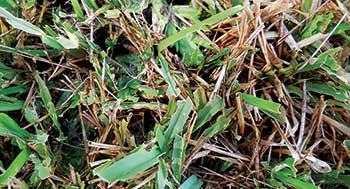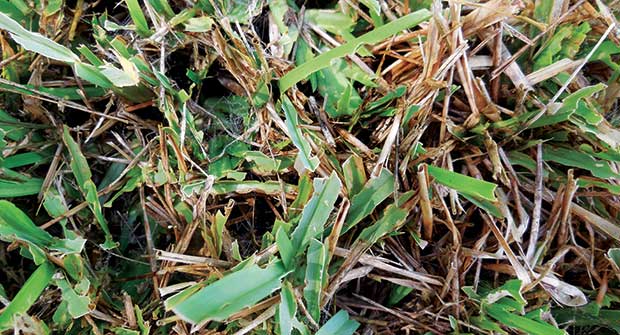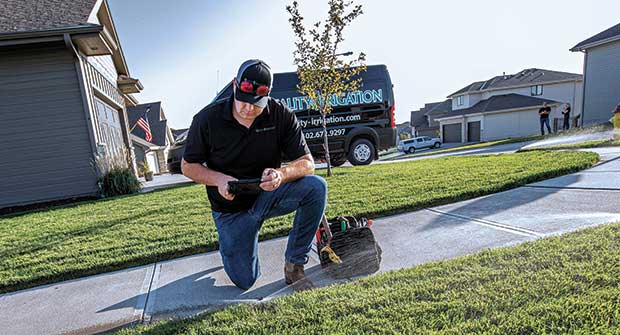
Sod webworms can be an unpredictable pest. Just because a lawn previously had sod webworm damage does not make it more susceptible in the future, says Cal Leggett, director of agronomy with Juniper Landscaping in Fort Meyers, Fla.
Juniper Landscaping is a full-service commercial landscape design, irrigation, construction and maintenance company.
“They’re a unique pest because they’re only somewhat predictable,” he says. “It can vary year to year and location to location — some years are light, and some years you’ll see it everywhere. You never know how bad an outbreak could potentially be.”
Leggett and Richard Kascsak, owner of Impeccable Lawns in Ocean Isle Beach, N.C., share tips to help manage this fickle insect.
Leggett says the No. 1 misconception about sod webworms is that when moths are present in a lawn, that means it’s time to spray. Moths may or may not be laying eggs.
“If you’re seeing a lot of adult moths, that doesn’t mean you need to go out and spray,” he says. “You just need to increase the scouting that you’re doing for actual damage to turf. Once you actually see the caterpillar itself, that’s where you want to make control applications.”
Educate, educate, educate

Kascsak also recommends avoiding excess sprays and treating for pests when needed. Impeccable Lawns offers lawn care, lawn maintenance and landscape design/installation for a primarily residential clientele.
“They want us to give them the information and treat it as necessary,” he says. “Really, the only way you can do both are through seeing the activity, spotting the insect and going from there. That’s the way it is with so many things in lawn care.”
Leggett says the unpredictability of sod webworms is an opportunity to educate the homeowner about the pest.
“When you enter that summer season, let (the client) know that it is a potential pest they could be seeing,” he says. “Maybe see if they can help scout for it, and if they see issues, they can reach out to you. You can educate them so at least they’re prepared for that as a possibility.”
Leggett says another critical component of educating the client is to share how scouting and treating is a part of your integrated pest management practices and that you’re only making an application once you hit that damage threshold.
“Even if they see the damage, assure your client that the turf will recover,” he says.
Scouting tips
Leggett says it’s also important to show your technicians what the signs of damage are and what the pest looks like.
When it comes to scouting for sod webworms, Kascsak says technicians should look for worms that are light green with some gray and dark green spots on the body. Turf damage shows up as areas browning out.
“If you reach out with your hand, the grass will come up, like you’re picking up thatch,” he says. “As you’re scraping it up, you’ll notice there’s not really a thatch layer left. Normally, if you do that, you’ll actually then pick up one of these guys when you’re raking through it. That’s really when you’re going to find out that you have the activity.”
Treat quickly
Leggett says that once technicians or clients find sod webworm damage, it’s important to treat the area with a contact insecticide. Leggett says he uses bifenthrin, and he knows other lawn care professionals apply pyrethrin or acephate.
“Once you start to see the damage, the populations are high, and it can result in extensive damage very quickly,” he says. “Over a weekend, you can go from very little damage to severe damage.”
Kascsak says while turf damage from sod webworms will look bad, it’s important to remember the feeding habits of the pest.
“They’re only interested in the foliage,” he says. “The plant will generally recover.”


